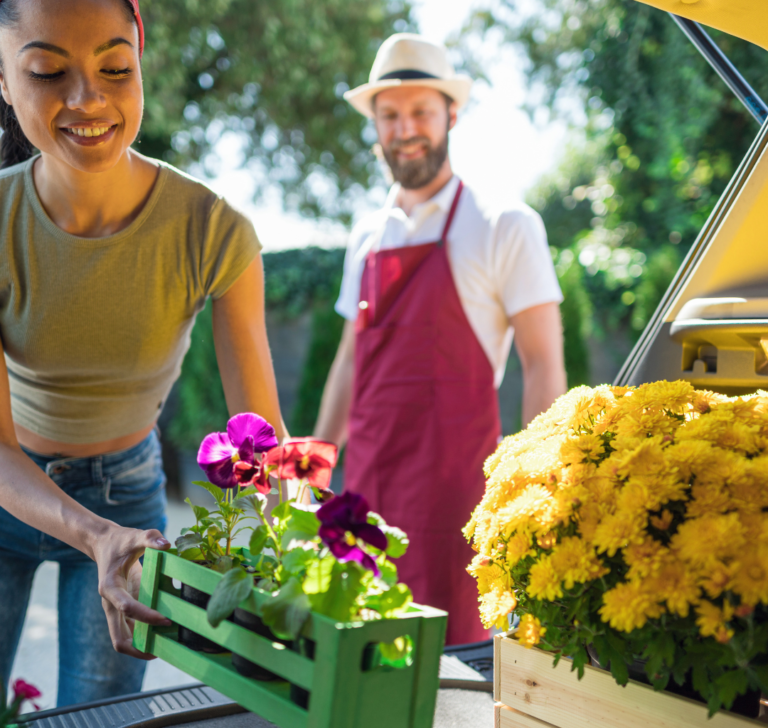It's possible that the flowers in your hands have undertaken a long journey of thousands of kilometers through an intricate global supply chain.
On Valentine’s Day, not only does love blossom. Flowers play a fundamental role in what this day represents, with millions of them being sent and received worldwide. Behind this romantic gesture, there is an elaborate logistical process that ensures the magic of love stays alive, performing true feats in the transportation and delivery of flowers for all lovers.
It’s possible that the flowers that have reached your hands have undertaken a long journey of thousands of kilometers through an intricate global supply chain, with the collaboration of major air and land cargo transportation companies. Most of these flowers come from Europe and Latin America, harvested during the period between February 1st and 10th, 2024, with destinations spanning the globe.
One of the American airlines that played a crucial role in this Valentine’s Day was American Airlines Cargo. According to their reports, they transported over 1.2 million pounds of flowers before February 14th. These flowers were destined for various locations around the world to ensure that seasonal varieties were fresh and ready for celebrations.

In Europe, British Airways World Cargo and Iberia Cargo collaborate closely to execute a flawless operation. Through their extensive global network, Valentine’s Day flowers are transported to the United Kingdom and Spain from countries such as Kenya, India, South Africa, the Netherlands, the United States, Colombia, and Ecuador.
The Colombian airline Avianca Cargo, after three weeks of operations to the United States, transported around 18,000 tons from Colombia and Ecuador to the US. This figure represents twice its usual capacity for this product, with approximately 300 flights during the season, as reported by the airline.
Exporting flowers on Valentine’s Day requires total coordination of the entire supply chain, where transportation plays a crucial role in logistics. However, the work begins much earlier. The cultivation process is strenuous: each planting takes approximately six months to reach maturity. After this period, harvesting is done every three months, gradually increasing in frequency until daily cultivation is achieved.
Once ready, the flowers are cut and undergo a post-harvest process that prepares them for the market. At this stage, it is essential to keep them cool and in optimal conditions, with temperatures controlled between 3 and 7 degrees Celsius, as reported by Gabriel Correa, flowers manager of Bojacá in Colombia. Once the flowers leave the farms, they are transported in trucks that preserve the cold chain initiated in the post-harvest stage.

Indy Bolina, Global Sales Manager of American Airlines Cargo, emphasized the importance of the global supply chain network that makes all these processes possible, as well as the dedicated operations team working on it. Additionally, he noted that the volumes recorded by the airline this year exceeded those of some previous years.
Valentine’s Day marks the beginning of the year with peaks in flower transportation volume. American Airlines Cargo points out that other significant dates where flower transportation increases include the Emperor’s Birthday in Japan, Easter, Mother’s Day in the USA and Europe, All Saints’ Day, Thanksgiving Day in the USA, and Christmas.

The story of the first car race in Paris: a historic hit in 1894
Paris stands not only as a cultural and artistic epicenter but also as a pioneer in car racing In the history of automotive racing, Paris

Top states for driving in the United States in 2024
A WalletHub study compared all 50 states to determine the best driving conditions Road safety and quality are central concerns for drivers. And while the

Briefs: marijuana reclassification, vehicle fees, and climate grants
The trucking industry goes through new legislation, taxes and subsidies Questions about the proposed reclassification of marijuana The Owner-Operator Independent Drivers Association (OOIDA) supports the

Impact of traffic pollution: study reveals increase in blood pressure
A study from the University of Washington in Seattle reveals that the main cause of significant increases in blood pressure might be traffic-related gasses A

The benefits and careers of a Commercial Driver’s License
Having a CDL opens multiple doors within the trucking and transportation industry Having a Commercial Driver’s License (CDL) opens multiple doors within the trucking industry,

Sharing the road with a truck: steps to ensure your safety
Caution around blind spots and anticipating truck maneuvers are essential to ensuring everyone’s safety Truck drivers face significant challenges on the road due to their
